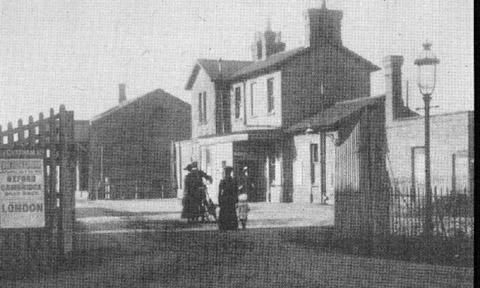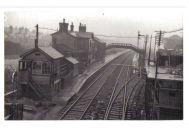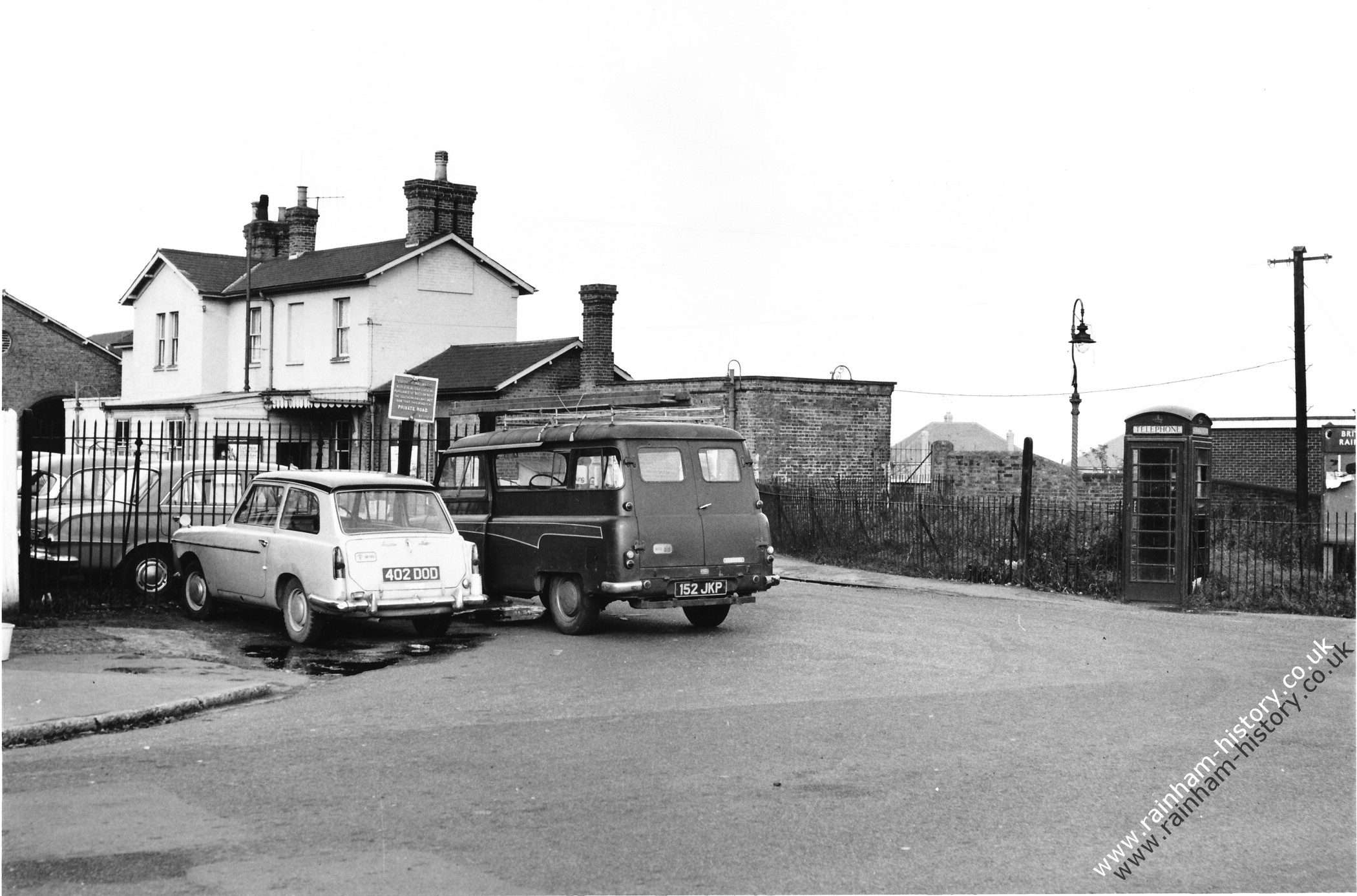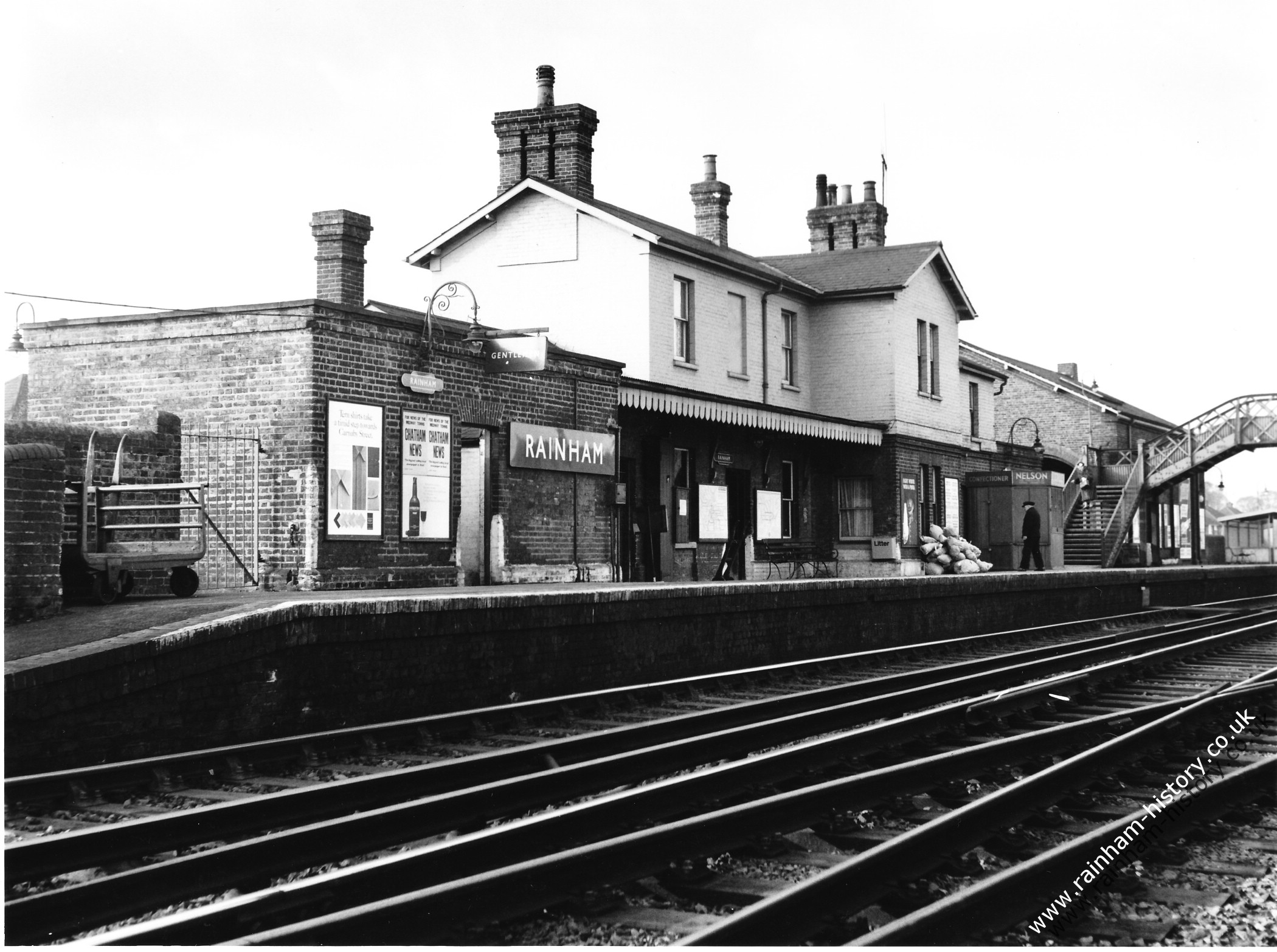It was first suggested that a railway service be provided for Kent in 1824 - a prospectus was drawn up and accepted in 1825. The topic was raised in 1832, again in 1835, and in 1836 the South Eastern Railways Act was passed. However there were already short distance railways operating - the Whitstable Canterbury being the nearest to this district. The South Eastern Railway when it eventually appeared had government blessing - a point which must have weighed heavily in its favour when engaged in battle with rival companies. One of the first to be merged was the Thames & Medway Canal & Gravesend & Rochester Railway in 1849. Chief rivals were the East Kent, which became the London, Chatham & Dover Railway operating from Victoria and the South East & Chatham Railway out of Charing Cross. A main line to Rochester started at Fenchurch Street and proceeded by Tilbury, the ferry and Gravesend.
Below: Rainham station in the late 1800s, probably around 1890

The line from Chatham to Faversham was opened in January 1858 (the link from Chatham to Strood opened in March). With the extension to Faversham came the stations at New Brompton (Gillingham) and Rainham Newington. In 1862 Newington got its own station. One comment at the time the railway opened up in Kent was that 'all the parishes became very populous and places which were once quite rural are now covered with houses for the toilers of the metropolis'. Transport was now cheap and easy enough to be available to the ordinary people, and thus was born that section of the population known as commuters.
In 1858 it was only a single track but fortunately the Chatham and Gillingham tunnels had been built sufficiently wide to allow a double track later without the need for major rebuilding. The three major companies all had bridges over the Medway at various times and it was not until 1927 that the re-alignment of the track made the South Eastern bridge the sole survivor.

There had been suggestions to close Rochester and Chatham stations in the interests of economy much to the delight of Gillingham Council who saw a very rosy future for New Brompton. It would have been almost impossible anyway since Chatham was a major station and the only way to Rainham involved changing at Chatham. June 1899 saw the amalgamation of the three major railways into the Southern Railway - which it remained until 1948. One attraction in 1899 was the Continental service out of Victoria via Queenborough to Flushing.
Below: Rainham station in 1966, notice how little has changed from the 1890s which was the original station building from 1858.
In 1944 a flying bomb fell on a bridge between Rainham and Newington - just twenty yards in front of the Victoria train, killing eight and injuring sixteen passengers. After British Rail took over in 1948 the suggestion was made that Rainham station be renamed 'Gillingham East'. This caused such an outcry that the idea was quietly dropped in much the same way that the Premier Inn on Maidstone Road was originally proposed as Gillingham East. Then in 1958 the first electric train ran to Rainham. There was no ceremony - it was one of five pilot runs and the only passengers were electricians and engineers.
The above photo was taken in October 1966 prior to the rebuilding of the station in 1968 which was now carrying more than 2,000 commuters each day as Rainham expanded. This building lasted much less time than the original and was redeveloped again in 1990 to the current building. The most recent expansion was the additional of platform 0 in 2015 that enables Thameslink trains to start from Rainham.
Below: Rainham station in 1980

Below: Rainham station 1987 during the snow













































































































































